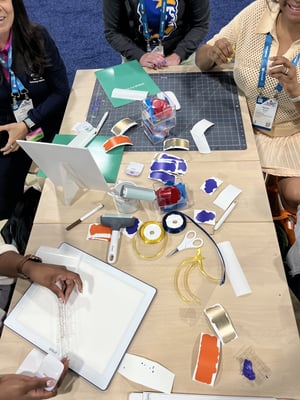Learning About Digital Footprint Sorting Activities




Description of Cricut Lesson & Activity
The objective of this lesson is to introduce and dive deeper into the concept of “digital footprint” while exploring digital citizenship and internet safety. These sorting games will help students understand the impact of their online activities and how to manage their digital footprint responsibly.
The activity is created as a Print and Cut for the Cricut and the lesson will be ready to use immediately.
- Citizenship
ISTE Standards
- 1.2 Digital Citizen
1.2.a Digital Footprint

For full project details, open in Cricut Design Space.
Click Here
For full project details, open in Cricut Design Space.
Click Here
Click Here
For full assessment rubric, download here.
Download Here
Learning Objective(s)
- ISTE standard 1.2.a: Students manage their digital identity and understand the lasting impact of their online behaviors on
themselves and others and make safe, legal and ethical decisions in the digital world.
Materials Required
- Materials:
- 9 pieces of 8.5x11 cardstock
- Blue or green cutting mat
- Printer
- Optional: Lamination
Instructions
Preparation:
In Cricut Design Space go the project. https://design.cricut.com/landing/project-detail/669a8ed6424aa79ae984c653 The file is ready to print and then cut on the Cricut machine. For longer use, laminate the pieces. The game is ready to play on a table. If you’d like to use it on a whiteboard, add a small piece of magnet to the back of each piece.
Playing the Game:
- There are headings for each game. The first sort, “Influences of the Digital Footprint” has titles “Influences Digital Footprint” and “Does NOT Influence Digital Footprint.” The point of this section is to introduce to students exactly what types of activities make up a digital footprint. The second sort “Positive and Negative Influences” dives deeper into specific activities that can influence a digital footprint.
- If playing as a group, mix up all the examples for one sort and distribute them among the students. (The pieces are color and shape coded to make sorting the two various games easy.)
- Ask each student to read their example aloud and decide which heading it belongs under. Discuss why each example was placed in the particular area.
- Students can have individual practice to reinforce the skills. Ask the students to sort each example under the correct
headings.
Assessment
Two rubrics are provided. One is an overall assessment and then there is an individual student checklist.
